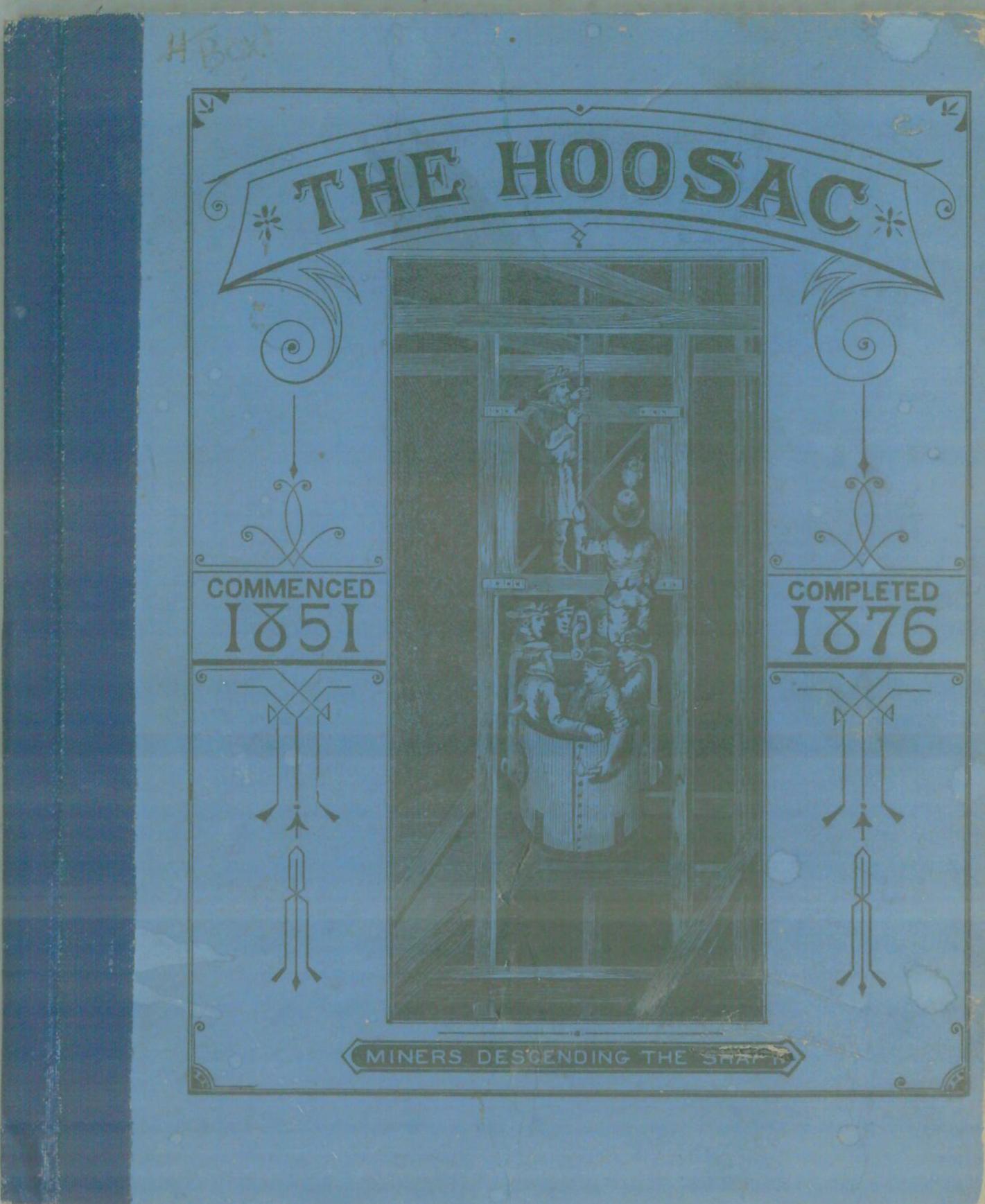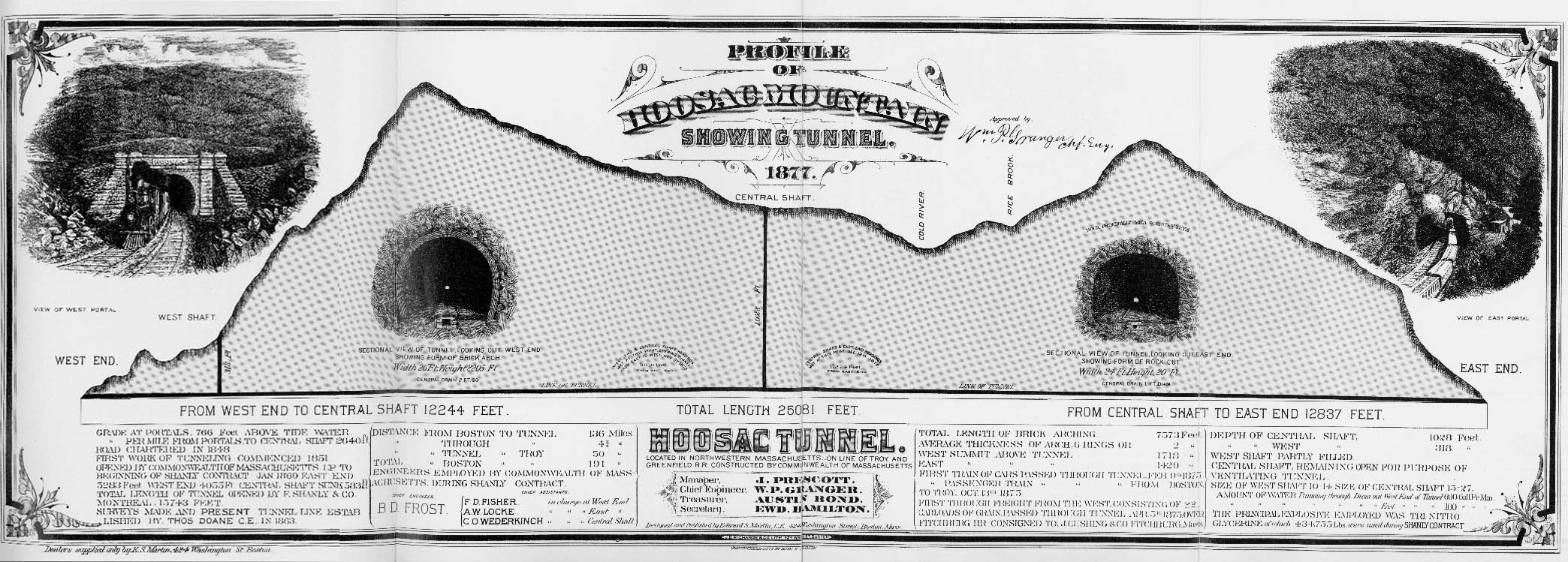By Daniel Hinchen
“…to write a history of the Hoosac Tunnel in all its details would be an almost endless task. The legislative bills and hearings, the reports of committees, remonstrances and private pamphlets on the subject, if stacked up in an orderly pile, would rival the size of the mountain itself.” (Orson Dalrymple, History of the Hoosac Tunnel, 3.)

One of the benefits of creating these blog posts is the opportunity to gain some background on topics that were previously unfamiliar to me. While the research does not go into a great deal of depth, it is a good way to get some “quick and dirty” facts and to expand familiarity with the great collections here at the MHS.
And today’s topic is no exception. When initially given the assignment, the name itself, the Hoosac Tunnel, was not completely unfamiliar to me, but there was absolutely no background knowledge in my mind to illustrate it.
So, a few specifics: the Hoosac Tunnel is about 4.75 miles long and is located between Florida, Mass. and North Adams, Mass. It cuts through the Hoosac Range, a southern extension of Vermont’s Green Mountains. It was a part of the Boston and Maine Railroad, connecting Boston to Troy, New York by way of Greenfield, Mass. This rail system is now part of the Pan Am Railways network.
While the physical work of creating the tunnel started in 1851, the original planning for a new route across Massachusetts began as early as 1819 with discussion of a canal project, which, even then, proposed a tunnel through the Hoosac Range. Over time, proposals and ideas morphed and the national rail building craze turned the canal project into a tunnel project, with formal fundraising beginning in 1848.

Ambiguous beginnings were matched by indefinite endings, and the completion of the Hoosac Tunnel included many firsts: the first work train passed through on 9 February 1875. In that same year the first freight train passed through on 5 April, and the first passenger train on 13 October. The work was totally finished in 1877 with the completion of the stone facing on the east portal. But the reason that the tunnel gets our attention today is that on 27 November 1873 the center of the tunnel was opened, joining the eastern and western halves. With the final blast, the longest tunnel in the western hemisphere (second in the world) was finally completed. It would hold this title until 1916.
And that is the quick and dirty of the Hoosac Tunnel.
If you would like to find out more about this impressive feat of engineering in Massachusetts History, visit the MHS website to search our online catalog, ABIGAIL, and search for the subject “Hoosac Tunnel” and find out what resources we have available!

